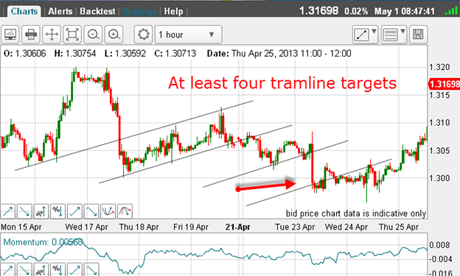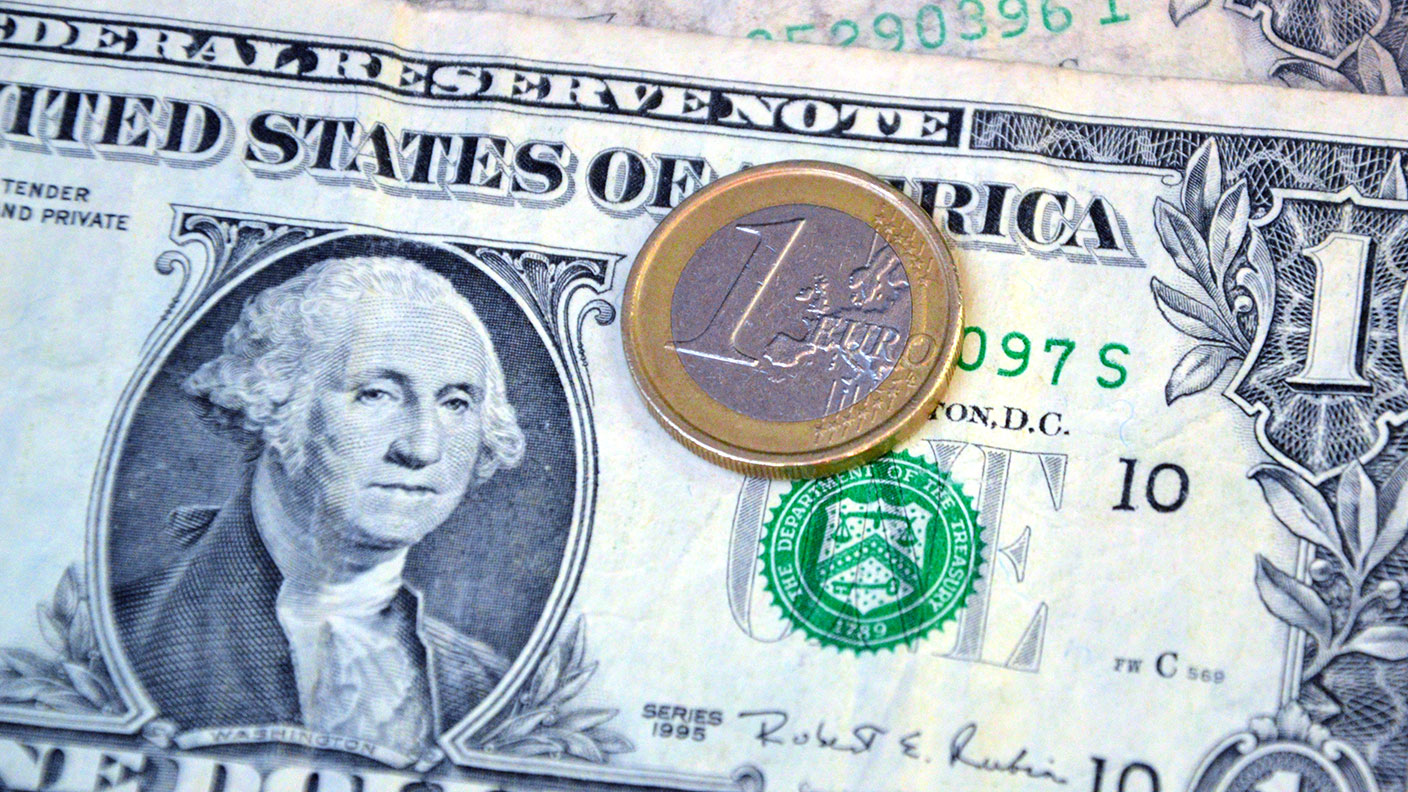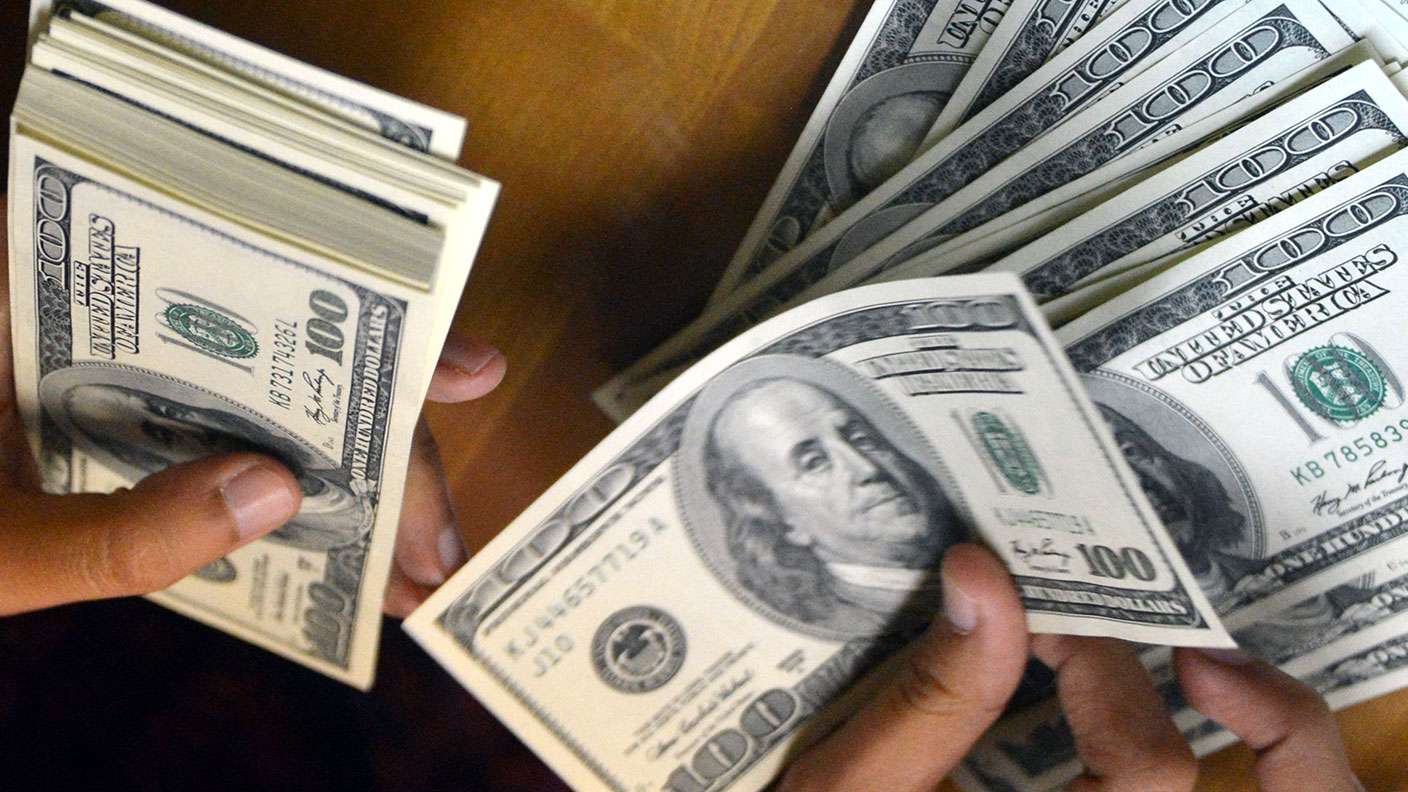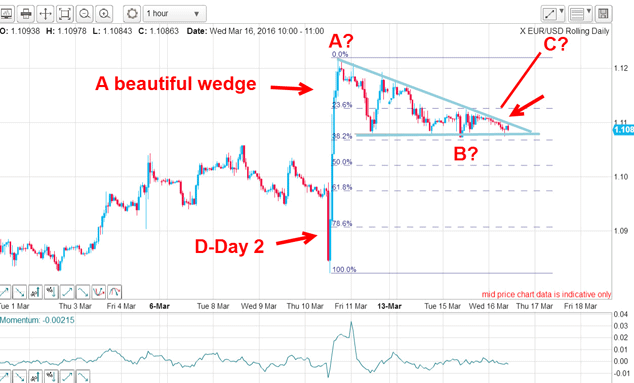The euro rallies ahead of interest rate decision – what next?
Whether or not the European Central Bank decides to raise interest rates, John C Burford is in for a no-risk trade on the euro - and the rewards could be very profitable indeed.
th { background: #2b1083; padding: 2px 1px;color: white;font-weight: bold;text-align: center;border-left: 1px solid #a6a6c9; font-size: .8em;}
th.first { border-left: 0; padding: 2px 1px;text-align: left; font-size: .8em;}
tr {background: #fff;}
MoneyWeek
Subscribe to MoneyWeek today and get your first six magazine issues absolutely FREE

Sign up to Money Morning
Don't miss the latest investment and personal finances news, market analysis, plus money-saving tips with our free twice-daily newsletter
Don't miss the latest investment and personal finances news, market analysis, plus money-saving tips with our free twice-daily newsletter
tr.alt {background: #f6f5f9; }
td { padding: 2px 1px;text-align: center;border-left: 1px solid #a6a6c9;color: #000;vertical-align: center; font-size: .8em;}
td.alt { background-color: #f6f5f9; }
td.bold { font-weight: bold;}
td.first { text-align: left; }
td.left { text-align: left; }
td.bleft{ text-align: left; font-weight: bold; }-->I will cover the euro today since we are on the eve of the much-awaited announcement from the European Central Bank (ECB) will they or won't they? I am talking of the rumours that they will lower the benchmark interest rate, currently at0.75%, which has held since July 2012.
The conventional thinking is that if a central bank lowers rates, it will put pressure on the currency.
But as I have explained in recent posts, markets often pay no heed to convention.
This means that we sometimes experience the sell the rumour, buy the news' effect. In other words, the market will immediately move counter to what's expected.
When I say expected', I mean what the conventional thinkers expect mainstream media, most experts', and so forth.
Unconventional traders will find reasons within their trading methods, of course to think the unthinkable. History tells us that is where the money usually lies.
When I last covered the euro on 22 April, I noted that the market was drifting lower and I wrote: "OK, so the market is telling us that it wants to move lower perhaps to my lower tramline just above the 1.30 area.
"Short-term traders will be eyeing this level to take at least partial profits."
This was the chart back then:

(Click onthe chart for alarger version)
So the 1.30 area was my target, and this is how it played out:

(Click on the chart for a larger version)
My target was hit (red arrow) and after several tramlines had been drawn.
But thereafter, the market found support and on Thursday 25 April, the decline off the 17 April high was looking suspiciously like an A-B-C complete with a positive-momentum divergence.
Time to look for a long trade.

(Click on the chart for a larger version)
Because I was looking for a long trade, I needed some down-sloping tramlines and these are the tramlines I found on 25 April.
The upper one has all of the high touch-points, and the centre line also is pretty good.
I then waited for a break up through the upper line, and early on Thursday, I had my break. That was my long entry in the 1.3040 area (red arrow).
Trader tip: With tramlines, you have a natural place to enter the market and can place stop orders ahead of time. You really do not need to keep watching your screen and going cross-eyed! Simply check every so often and if your order is filled, get your stops in pronto.
I decided to give this trade a little room and placed my protective stop just under the 1.30 level.
To me, if the market could rally to the previous minor high at 1.3080, there should be enough shorts with their stops anxious to escape.
As I write this morning, these shorts have indeed been squeezed:

(Click on the chart for a larger version)
The market moved up sharply, and I could then draw in my new tramlines, as shown.
To cap it off, the market came back to kiss the centre tramline (blue arrow) and took off in a scalded-cat bounce.
That is classic trending behaviour, as I have shown many times in previous posts.
I always look for these kisses as it gives me increased confidence in my trading stance.
Of course, if you had missed the earlier entry, this was also a great low-risk place to enter a long trade.
And now the market has reached the upper tramline target just under the 1.32 level (red arrow) and I can move my stop to break-even.
Now, the next target is the previous major high at 1.32 set on 16 April.
I imagine that there are plenty of buy stops sitting right there.
Remember, I had a potential 1.3350 target from last time. Is it possible it will be hit sometime soon?
Let's see how the commitments of traders (COT) data looks to take a sentiment reading:
| OPEN INTEREST: 220,051 | ||||||||
| COMMITMENTS | ||||||||
| 47,807 | 82,082 | 5,603 | 127,780 | 78,147 | 181,190 | 165,832 | 38,861 | 54,219 |
| CHANGES FROM 04/16/13 (CHANGE IN OPEN INTEREST: 4,394) | ||||||||
| -1,514 | 2,997 | -155 | 6,408 | 1,289 | 4,739 | 4,131 | -345 | 263 |
| PERCENT OF OPEN INTEREST FOR EACH CATEGORY OF TRADERS | ||||||||
| 21.7 | 37.3 | 2.5 | 58.1 | 35.5 | 82.3 | 75.4 | 17.7 | 24.6 |
| NUMBER OF TRADERS IN EACH CATEGORY (TOTAL TRADERS: 175) | ||||||||
| 34 | 67 | 26 | 46 | 44 | 95 | 122 | Row 8 - Cell 7 | Row 8 - Cell 8 |
And during that week, the large specs shifted to an even greater short position. Remember, this was just as the market was testing the 1.30 level and just prior to the big rally.
This means, I can deduce that the rally to the current sub-1.32 level was propelled in part by a big squeeze on these specs.
I like that!
But whatever the outcome of tomorrow's ECB announcement, I have a no-loss trade working, and I will even reap big rewards if my 1.3350 target is approached.
If you're a new reader, or need a reminder about some of the methods I refer to in my trades, then do have a look at my introductory videos:
The essentials of tramline trading Advanced tramline trading An introduction to Elliott wave theory Advanced trading with Elliott waves Trading with Fibonacci levels Trading with 'momentum' Putting it all together
Don't miss my next trading insight. To receive all my spread betting blog posts by email, as soon as I've written them, just sign up here . If you have any queries regarding MoneyWeek Trader, please contact us here.
Get the latest financial news, insights and expert analysis from our award-winning MoneyWeek team, to help you understand what really matters when it comes to your finances.
John is is a British-born lapsed PhD physicist, who previously worked for Nasa on the Mars exploration team. He is a former commodity trading advisor with the US Commodities Futures Trading Commission, and worked in a boutique futures house in California in the 1980s.
He was a partner in one of the first futures newsletter advisory services, based in Washington DC, specialising in pork bellies and currencies. John is primarily a chart-reading trader, having cut his trading teeth in the days before PCs.
As well as his work in the financial world, he has launched, run and sold several 'real' businesses producing 'real' products.
-
 Investors will reap long-term rewards from UK equities
Investors will reap long-term rewards from UK equitiesOpinion Nick Train, portfolio manager, Finsbury Growth & Income Trust, highlights three UK equities where he’d put his money
-
 The graphene revolution is progressing slowly but surely
The graphene revolution is progressing slowly but surelyEnthusiasts thought the discovery that graphene, a form of carbon, could be extracted from graphite would change the world. They might've been early, not wrong.
-
 Investors dash into the US dollar
Investors dash into the US dollarNews The value of the US dollar has soared as investors pile in. The euro has hit parity, while the Japanese yen and the Swedish krona have fared even worse.
-
 Could a stronger euro bring relief to global markets?
Could a stronger euro bring relief to global markets?Analysis The European Central Bank is set to end its negative interest rate policy. That should bring some relief to markets, says John Stepek. Here’s why.
-
 A weakening US dollar is good news for markets – but will it continue?
A weakening US dollar is good news for markets – but will it continue?Opinion The US dollar – the most important currency in the world – is on the slide. And that's good news for the stockmarket rally. John Stepek looks at what could derail things.
-
 How the US dollar standard is now suffocating the global economy
How the US dollar standard is now suffocating the global economyNews In times of crisis, everyone wants cash. But not just any cash – they want the US dollar. John Stepek explains why the rush for dollars is putting a big dent in an already fragile global economy.
-
 The pound could hit parity with the euro – but if it does, buy it
The pound could hit parity with the euro – but if it does, buy itFeatures Anyone visiting the continent this summer will have been in for a rude shock at the cash till, says Dominic Frisby. But the pound won't stay down forever.
-
Gold’s rally should continue
Features Matthew Partridge looks at where the gold price is heading next, and what that means for your online trading.
-
 Prudent trades in Prudential
Prudent trades in PrudentialFeatures John C Burford shows how his trading methods can be used for more than just indices and currencies. They work for large-cap shares too.
-
 Did you find the path of least resistance in EUR/USD?
Did you find the path of least resistance in EUR/USD?Features John C Burford outlines a trade in the euro vs the dollar in the wake of the US Federal Reserve’s most recent announcement.